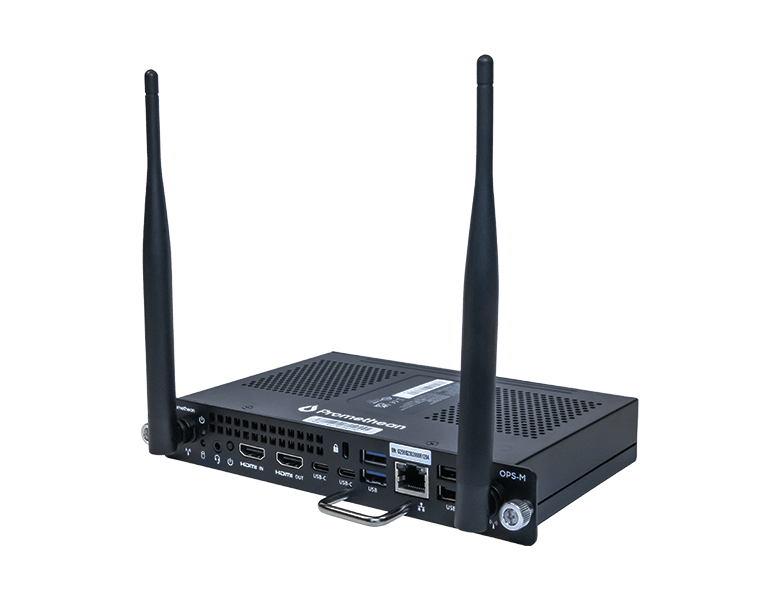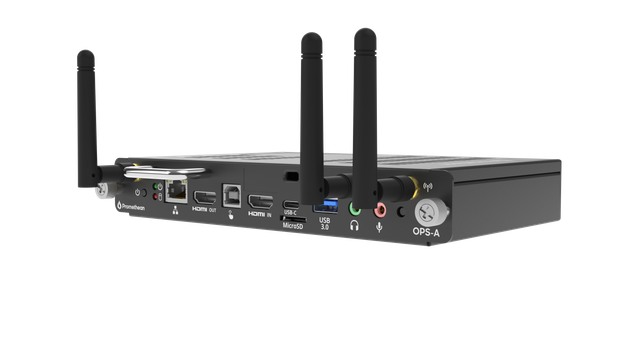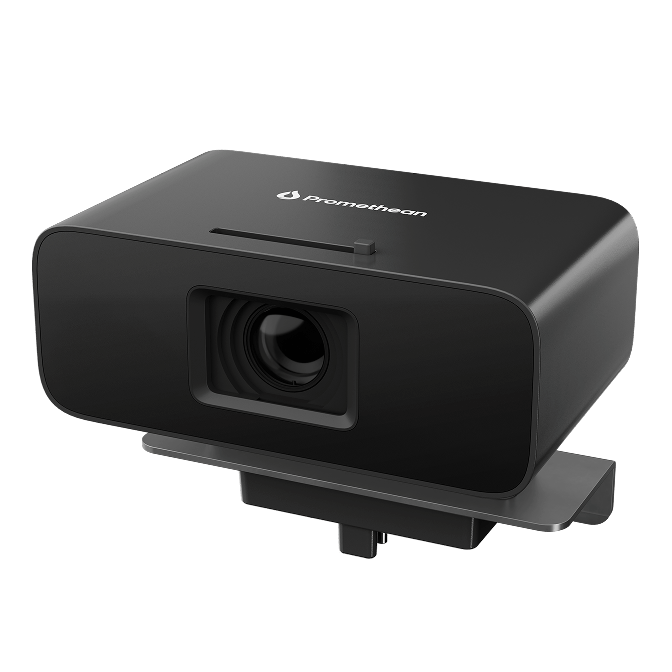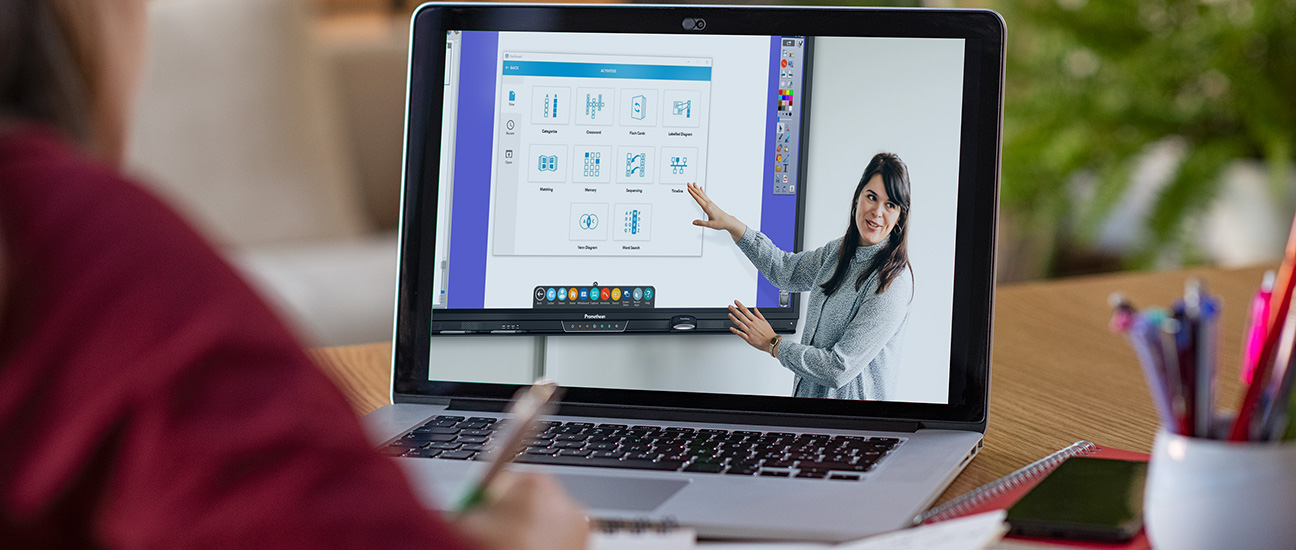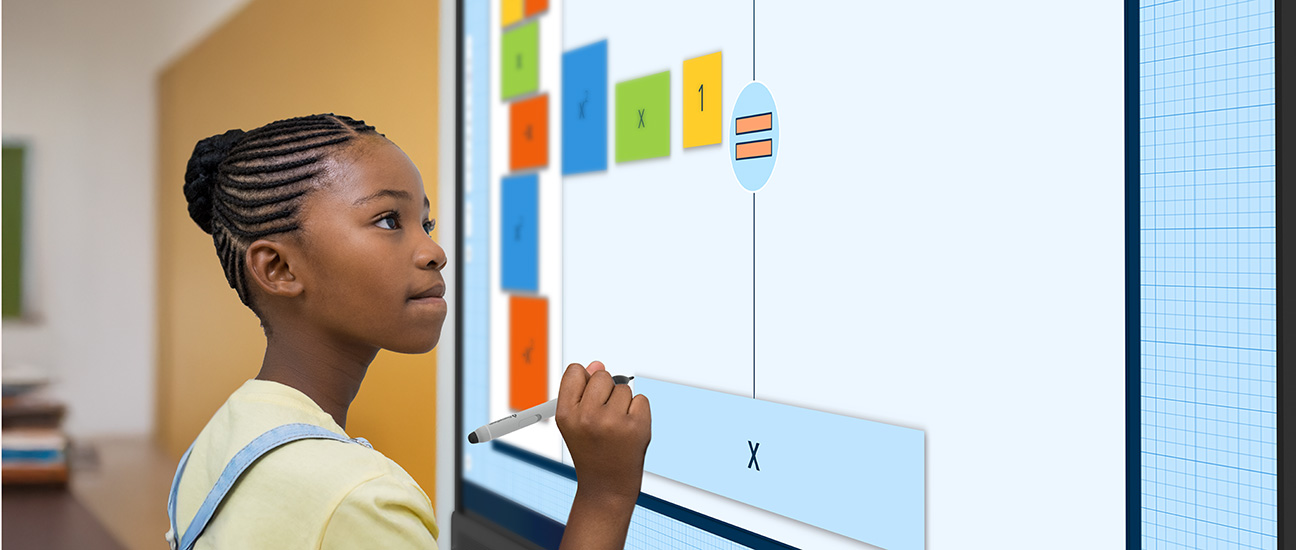Published on August 21st, 2025
What is a smart board and how does it work?
14 minute read
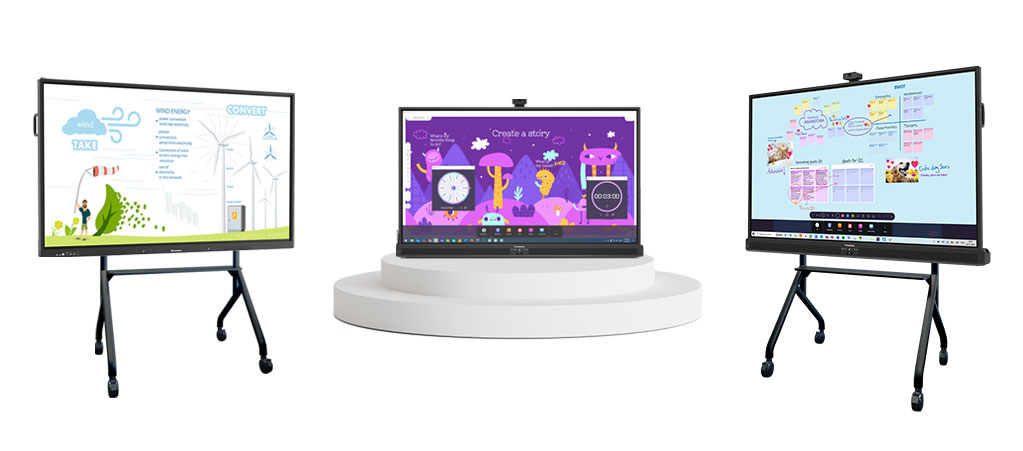
Summary
Remember the frustration of trying to explain a complex concept with dried-out markers or smudgy chalk? Today’s educators and business professionals have a much more powerful option. Smart boards such as the Promethean ActivPanel have transformed how we present information, collaborate on ideas, and engage audiences in both classrooms and boardrooms.
Smart board definition
A smart board is an interactive display that combines touchscreen technology, stylus input, and specialized software to create a dynamic presentation and collaboration tool. Unlike traditional whiteboards that limit you to what you can physically draw, smart boards function as powerful computer interfaces that respond to touch while connecting to a world of digital resources.
This technology enables multimedia integration, facilitates remote access, and supports real-time collaboration. Instead of erasing important information to make room for new content, users can save everything, instantly access any digital resource, and share their work with participants regardless of location.
How does a smart board work?
The functionality of smart boards relies on three integrated technologies that work together easily. These include touch recognition systems, specialized software, and connectivity options.
When you interact with a smart board’s surface, sophisticated sensors detect precisely where and how you are touching it, whether with a finger, stylus, or multiple touch points simultaneously. This input is instantly translated into digital actions through the board’s software.
Teachers and presenters can write and draw naturally, just as they would on a traditional board, but with significantly enhanced capabilities. They can display content from connected devices, annotate directly over websites or videos, and enable multiple participants to contribute.
Modern smart boards feature wireless connectivity that allows for smooth device mirroring from laptops, tablets, and smartphones. Cloud storage integration means your work is automatically saved and accessible from anywhere.
Key features of a smart board
Real-time collaboration
Smart boards transform group work by enabling truly collaborative experiences. Multiple users can interact with the board simultaneously, whether they are physically present or joining remotely. With support for multiple touch points, several people can write, draw, or manipulate content at once without creating confusion.
Multimedia integration
One of the most powerful aspects of smart boards is their ability to consolidate multiple media types into a single, integrated experience. Users can effortlessly display videos, websites, documents, and interactive applications without awkward transitions between devices or platforms.
Users can annotate directly over any media type, circling important data points on a graph, highlighting key passages in a document, or drawing attention to specific elements in a video.
Save and share functionality
With smart boards, content can be saved in multiple formats, emailed directly to participants, or printed for those who prefer physical copies.
Integration with cloud services like Google Drive and OneDrive takes this functionality to the next level. Your saved content automatically syncs to secure cloud storage, making it accessible from any device at any time. Students can revisit complex lesson materials when studying at home, while business teams can reference meeting outcomes without relying on potentially incomplete notes. This smooth connectivity supports deeper review and thoughtful revision of materials long after the initial presentation.
Flexible input options
For precise drawing or writing, many users prefer the control of a stylus. For quick selections or simple annotations, direct finger touch often feels more intuitive. Multi-touch capability means the board recognizes and responds to multiple inputs simultaneously, enabling true collaborative work where several people can contribute at once.
Presenters can control the board while moving around the room, teachers can annotate content from a tablet while helping individual students, and participants can share content directly from their smartphones. This input flexibility does not just accommodate different teaching or presentation styles, it provides crucial accessibility benefits for users with different physical abilities.
Smart boards in education
Classroom use in K-12
Within K-12 classrooms, smart boards have transformed education by enabling teachers to create more dynamic, responsive learning environments. They support differentiated instruction by allowing educators to quickly adapt content for various learning styles, displaying visual aids for visual learners while simultaneously providing interactive exercises for hands-on learners.
In mathematics, problem-solving becomes a collaborative activity when students can approach the board to work through equations step-by-step, with their work saved for later review. Language arts teachers use smart boards for interactive reading comprehension activities where students highlight text, identify literary devices, and make connections between passages. Science classes benefit from interactive diagrams and simulations that students can manipulate to better understand complex concepts.
Smart boards in higher education
In college and university settings, smart boards have radically changed how complex subjects are taught and understood. Professors use them to create dynamic lectures that go far beyond traditional presentations, incorporating multimedia elements that bring abstract concepts to life.
Engineering students can manipulate 3D models of structures to understand stress points and design principles. Medical students can explore anatomical diagrams layer by layer, annotating important features during discussions. Business classes can conduct real-time analysis of market data, with students contributing insights directly to the shared display.
Student presentations also reach new heights of interactivity. Architecture students can walk peers through building designs, biology students can demonstrate cellular processes through animated diagrams, and business students can present interactive financial models.
Smart boards in the workplace and public sector
Business meetings and team collaboration
Within business settings, smart boards have fundamentally changed how businesses conduct meetings and collaborative sessions. Instead of one-way presentations where a single person speaks while others listen passively, teams now engage in dynamic exchanges where everyone can contribute visibly and meaningfully.
The technology particularly shines in today’s hybrid work environments. App integrations with platforms like Zoom and MS Teams ensure remote participants are not just observers, they are active contributors who can annotate and share content just like those physically present.
Shared whiteboarding capabilities allow teams to visualize concepts together in real time. Marketing teams map out campaign strategies with digital sticky notes and flowcharts. Product developers sketch new designs that team members can instantly modify and improve. Project managers create timelines where dependencies and milestones are clear to everyone involved.
Public sector and government use
Government agencies and public sector organizations have embraced smart boards for their versatility in handling complex information and facilitating clear communication. The technology proves invaluable for conducting interactive training programs where participants can practice procedures, work through scenarios, and receive immediate feedback.
Security features, intuitive interfaces, and adaptability make smart boards ideal for government applications. Sensitive information can be displayed and discussed without creating permanent records when needed. The user-friendly design ensures that personnel with varying technical skills can participate effectively. The ability to quickly switch between different types of content, from spreadsheets to maps to video feeds, supports the diverse needs of government operations.
Smart boards also serve as powerful tools for community engagement and public information sharing. Town hall meetings become more transparent when citizens can see and interact with proposed plans, budget allocations, or development projects. Complex data visualizations help make government operations more understandable to the constituents they serve, fostering greater trust and participation in civic processes.
Benefits of using a smart board
Boosted engagement and participation
The interactive nature of smart boards fundamentally changes how people engage with presented content. Touch interaction combined with rich visuals helps maintain attention spans that might otherwise wander during traditional presentations. When participants can physically interact with content (moving elements, drawing connections, or adding their own ideas) they become active contributors rather than passive recipients.
Time-saving features
Smart boards simplify workflows in ways that save valuable time for educators and business professionals alike. The ability to save and instantly share content eliminates the need for manual note-taking or post-meeting transcription. What once required photographing whiteboards, typing up notes, and distributing them via email now happens automatically with a single touch.
Preloaded templates and resources accelerate lesson and meeting preparation. Teachers can access ready-made educational activities that they can quickly customize for their specific needs, while business users can pull up project planning templates or analysis frameworks instantly.
Stronger collaboration
Real-time teamwork reaches new heights when multiple users can simultaneously contribute ideas, solve problems, and build on each other’s work. Smart boards create shared digital spaces where collaboration feels natural and immediate. Whether participants are sketching design concepts, solving equations, or mapping out strategies, everyone’s input appears instantly for all to see and interact with.
Enhanced accessibility
Smart boards break down barriers for users with diverse learning needs and physical abilities. Visual support tools help students with reading difficulties by allowing text enlargement and color contrast adjustments. Auditory features can read content aloud for those who learn better through listening. Kinesthetic learners benefit from the tactile interaction of touch-based activities.
Smooth software integration
Modern smart boards do not exist in isolation. They connect fluidly with the digital tools educators and professionals already use daily. This integration eliminates the friction that often accompanies technology adoption and creates a more cohesive digital ecosystem.
What to consider when buying a smart board
Making the right smart board investment requires evaluating several key factors to ensure the technology meets your specific needs. Screen size should match your space and audience, a small conference room has different requirements than a large lecture hall. Resolution affects the clarity of displayed content, particularly important when showing detailed diagrams or small text. The operating system determines which apps and software you can run natively versus through connected devices.
Connectivity options deserve special attention during your evaluation. Consider how many devices will need to connect simultaneously and whether wireless capabilities are essential for your environment. Compatibility with your existing technology ecosystem is crucial, will the smart board work fluidly with your current computers, tablets, and software platforms?
Do not overlook the human element in your decision-making process. What training options does the vendor provide to get your team up to speed quickly? Is there ongoing support available when questions arise or issues occur? Consider warranties and upgrade paths to protect your investment long-term. The right smart board solution includes not just hardware but the ecosystem of support that ensures successful implementation and adoption.
Promethean smart board solutions
Promethean’s ActivPanel stands as a leading interactive smart board solution, combining intuitive design with powerful functionality for education and professional environments. Built specifically to withstand the demands of daily use in classrooms and meeting rooms, ActivPanel delivers the reliability and ease of use that makes technology truly transformative rather than frustrating. The comprehensive ecosystem of Promethean ActivSuite™ software enhances the hardware capabilities, creating complete solutions for any environment.
Ready to experience the difference a smart board can make in your classroom or workplace? Explore Promethean’s interactive smart boards today and discover how the right technology can transform the way you teach, learn, and collaborate.











